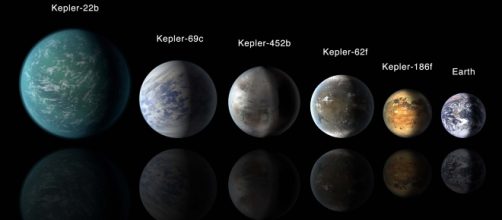The Hubble Space Telescope, despite a rocky start due to an out of focus mirror, has revolutionized astronomy in its many years of observing everything from distant galaxies to nearby planets. The follow-on to the Hubble, the James Webb Space Telescope, is due to launch in 2018 and should push back the frontiers of astronomy even further. A new piece in Forbes is touting a concept for an even greater space telescope, the Large UV/Optical/IR Surveyor (LUVOIR), that is said to have 40 times the capacity of the Hubble. LUVOIR is one of four Decadal Survey Mission Concept Studies that was started in January 2016 and will last for three years.
What is the LUVOIR?
The LUVOIR would be a 15.1-meter telescope that would be deployed at the L2 Lagrange Point sometime in the 2030s. It would be capable of taking images in wavelengths ranging from ultraviolet down into infrared. The telescope is considered a quantum leap in the technology of space-based astronomy. LUVOIR would be a particularly useful tool for studying exoplanets and objects in our home solar system, along with other celestial phenomena.
Imaging exoplanets
Thanks to the Kepler Space Telescope, confirmed by a number of other observatories both space and ground-based, thousands of exoplanets have been detected by measuring the variations in light from other stars when planets pass between them and Earth.
LUVOIR will be able to take actual images of some of these brave new worlds. Moreover, the telescope will be able to measure biosignatures, the chemical signs of life that may exist on some of the Earth-sized worlds.
Exploring the solar system
One interesting claim made about the LUVOIR is that it will be able to take images of objects in our home solar system with the same kind of clarity as space probes do currently. The telescope will be able to take pictures of the moons of the outer planets such as Europa and Enceladus and image celestial bodies out in the Kuiper Belt. Spectra analysis would provide a great deal of scientific data of these relatively nearby worlds.
What happens now?
The LUVOIR is being studied as a mission concept as part of the Decadal Survey Mission Concept Studies now ongoing.
Other space astronomy concept includes a Far IR Surveyor, and X-Ray Surveyor, and an Exoplanet Imager. The four mission concepts will be evaluated in 2020. Whichever mission is ultimately selected will likely fly sometime in the 2030s, a decade that could be an exciting time for space exploration in general, considering plans for the moon. The Trump administration is reviving Mars, and beyond that.


